Note: This article contains spoilers for The Handmaid’s Tale (1985) The Testaments (2019), all released seasons of Hulu’s The Handmaid’s Tale (2017), all published content of A Song of Ice and Fire (1996-present), and all seasons of HBO’s Game of Thrones (2011-2019).
On 10 September 2019, esteemed Canadian author Margaret Atwood released a fascinating novel called The Testaments, the sequel to her 1985 classic The Handmaid’s Tale.
Atwood did not plan to return to the misogynistic theocracy of Gilead after penning the first installment in the series. She had already started working on a sequel before the 2016 US election, though was greatly inspired by its result, as well as other political changes in the mid-2010s.
There is another reason why the book exists in its form, though – and that is the fact that Hulu picked up The Handmaid’s Tale for a television show. One that did not end where Atwood did, with the protagonist Offred (called June in the show’s narrative, and Atwood has welcomed readers to refer to her as June in the continuity of the novels) entering a van of either government agents ready to kill her, or rebels ready to rescue her. Two more post-book seasons have aired, and although there are some rather strong concepts still present, Hulu’s second and third seasons have proved somewhat disappointing.
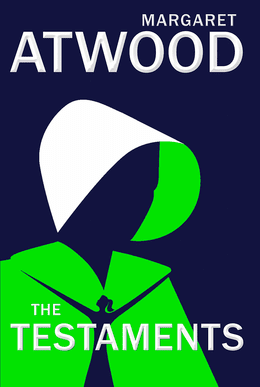
I don’t want to put The Handmaid’s Tale, a show that actively engages with feminist themes from its very premise, on the same level as Game of Thrones. I want to clarify that it’s chiefly structure, characterisation, and worldbuilding that’s the problem with the Hulu series, and Bruce Miller’s lacklustre decisions aren’t anywhere near as bad as Benioff & Weiss’s egregious blunders with Game of Thrones. But as I held The Testaments in my hands, my eyes glued to its pages, I couldn’t help but wonder: is this what it will feel like, to have The Winds of Winter in front of me?
After the end of Game of Thrones, its culture of acedia manifested within me. I was never personally invested in the show’s writing choices after the fifth season, and at the time of the series finale, I felt nothing. But that nothing turned into a different sort of emptiness: I asked myself whether I had been a fool to truly believe that A Song of Ice and Fire was as rich and complex as it is. A logical part of me always said that there was no reason to doubt Martin’s continued ingenuity, but another side of me felt as if I would regret investing in GRRM; that I would come read Winds and be disappointed; the same poorly-written decisions being there.
The Testaments was a perfect remedy to the doubting part of my inner fan.
A novel, and a TV adaptation that went past the original story
I first read The Handmaid’s Tale in late 2015 for my high school English Literature class. I think I was the only person in the class who not only liked reading the novel but was fascinated by it. It’s a very internal novel, restricted to the life of Offred. What is Gilead really like outside the walls of the Commander’s house? She doesn’t know, so neither do we. But Atwood still manages to detail the elaborate caste system of women, illustrate that everyone has their own lives beyond our pages. The world’s bizarre religion – based on Christian Evangelism – is explored through the rape-ritual of the Ceremony, the Birth Days where female sex slaves give birth in a children’s birthday party-like setting, or Particicutions where enemies of the state are torn to pieces.
It’s also a highly internal novel. Offred spends chapters confined within the house, musing that she has simply nothing to do except try and have a child to serve the state. She goes over etymologies of the objects she encounters, for instance. In terms of the novel’s “action,” the most exciting event that happens in the novel is the Commander bringing her to a brothel. Her friend Moira, once a sex slave for reproduction in training, escaped but was captured and made a sex slave for pleasure.
There’s absolutely nothing wrong with an internal journey that prioritises character, setting, and theme over plot. In fact, these are the hallmarks of the “literary” label, that academia holds in high regard and is the reason why this book is studied in the British school system. But what is loved by English Literature teachers is not going to be liked in the same way by a multi-million dollar streaming company who wants to make a television adaptation of the novel.

On the whole, there is very little to criticise about the first season of Hulu’s show. The Handmaid’s Tale has some small deviations to make it marketable – the Commander and his Wife are now attractive 30-somethings instead of 50-70-somethings. The dynamic is altered, but I can’t say it’s worse or ruined by this change. In fact, I actually liked most of the changes they made: unless you’re Phoebe Waller-Bridge creating the televised masterpiece that is Fleabag, it’s pretty hard to have a character be the focal point in every scene, and much more to sell the story solely from June’s limited viewpoint as Hulu’s flagship show. I enjoyed the interactions in the Waterford household where June wasn’t present and was intrigued by Emily’s separate storyline, who, along with Moira, seemed to have something to say about the unique experiences of a lesbian in Gilead.
I also loved the cinematographic language, and still do, even if the methods are becoming a little tired now, and less varied than in Season 1. In the 1990 film, Gilead was the run-of-the-mill dystopia visually. In the TV series, the cut of the Wives’ dresses, to the bright colours in the neighbourhood, give Gilead the feeling of a twisted suburbia – a parody of the 1950s idyll of conservatives, complete with theocracy and sex slaves. After all, literary and visual media convey their ideas in different ways.

I did spot some problems with shoddy worldbuilding that early on. An addition to the novel came in the form of a female ambassador from Mexico, who was interested in buying Handmaids. While Atwood had other countries neglect Gilead entirely, Mexico (which retains its same political system as the present day) buying Handmaids is just silly – the system is predicated upon them being assigned to members of the military elite; to be a Handmaid would be impossible in a secular, democratic country.
This continued into Season 2 – the first “post-book” season – where one of the biggest blunders came in rescuing Emily and Janine from the Colonies. The Colonies are death camps that nobody ever comes back from, unless they are two supporting characters who need to get back into the main narrative. The justification is that Gilead suffered a small terrorist attack… but it leads to them taking back a murderer and attempted child murderer rather than simply converting the fertile wives of male civilians into Handmaids, as had been explored just a few episodes ago. You could say the choice was character-driven, but character driven in a way that neglects the setting. Emily’s plot also amounted to nothing: she escaped for the final time several episodes later, so I don’t see why she couldn’t simply have escaped directly from the Colonies for a more cohesive narrative.
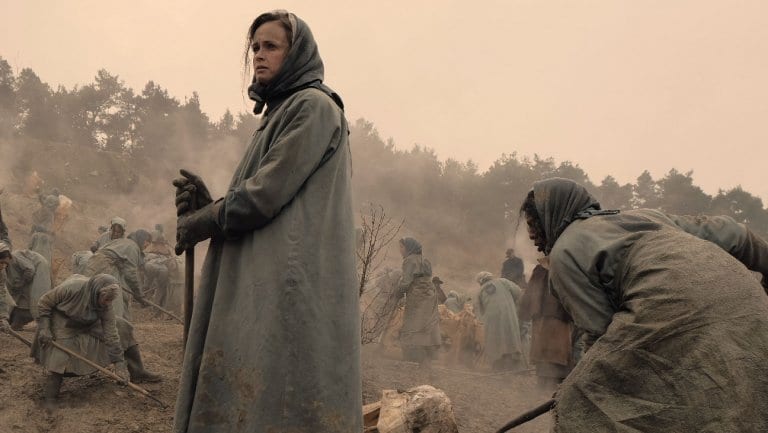
That decision was part of an overall invincibility of the main cast, with June at the crux of the problem. It’s one thing to make a narrative focused on an expendable, downtrodden member of a dystopian society. But that’s incompatible with a narrative where the main character is defiant, consistently gets caught by the government, and suffers no real consequences. I feel that if they wanted to make June into a defiant figure, they should have let her escape or become part of the rebellion: but no, this is marketed as The Handmaid’s Tale, and Moss is known as the titular Handmaid. This culminates in her decision to stay in Gilead while after smuggling her infant child out: on the surface, it is to get her first child out, in actuality, it is to see Moss in a red dress again.
This trend continues to the third season, which suffers from a much more confused narrative. One episode, June is in DC (a retcon of the prior seasons where all government decisions were made in Boston), another she is stuck in a hospital with her brain-dead, pregnant shopping partner, the next she is taken back home, and… it seems like the government wants to inspect whether she and her new, unconventional Commander are actually performing the rape-ritual! Never mind that last episode she couldn’t perform the ritual because they had her get stuck in a hospital. The last three episodes see June being hailed as a hero by the others for getting over 50 children out of Gilead, though she just isn’t the one who even orchestrated it: she told the Marthas to make it happen, and they did.
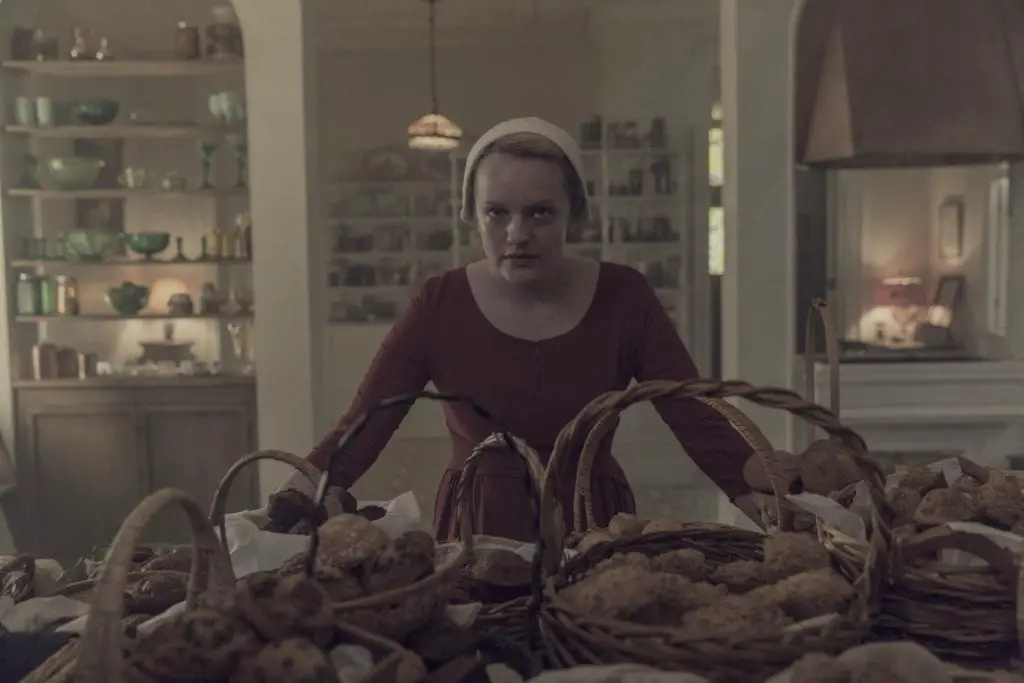
The Handmaid’s Tale has been thought of being sensationalist in Season 2, with episodes feeling a little more like “trauma of the week” versus the more organic suffering that Atwood is able to explore. That’s still somewhat of a problem, but perhaps in responding to dial down the suffering, they have compounded their structural problems where it’s just the “filler episode of the week,” most times, and the suffering is in the form of side characters first, main cast second, June last – we can’t have anything that really affects a star cast member’s ability to be in the story, right?
So I didn’t have high hopes when reading The Testaments, even though I know that the second and third seasons had minimal involvement from Atwood. I hoped for maybe a completely new narrative, the lives of other women in Gilead rather than a direct sequel.
It was not what I expected. I mean that in the best way possible.
The post-adaptation sequel
The Testaments is utterly mind-blowing from start to finish.
It returns to that which I loved about the original novel: the subcultures of the female castes in Gilead. It could very well have been called The Aunt’s Tale, as they are the focus this time around. We learn about their own rituals: they lay fertility offerings of oranges, croissants, and eggs at the feet of the four Founding Aunts, their Mothers Superior, their Archbishops, their living saints – the posters of these women hang in the schools of upper-class girls, and one character even considers praying to them. Their power is almost comparable to nuns of the Middle Ages: they take no husbands, but instead are erudite, the only women in Gilead allowed to read and write (unlike the Middle Ages, where noblewomen could certainly read, write, and wield power, the upper-class Wives are nothing compared to the Aunts) – and more powerful still; there is no male monastic order to rival them. Atwood gives sneaky little references to Saint Hildegard, Margery Kempe, and – Phyllis Schlafly – as among the women that the Aunts see themselves emulating. There are the Supplicants, who train as novices for nine years and then become the acolyte Pearl Girls, ruthless manipulative spies and missionaries who prey on vulnerable foreign women to recruit them for their theocracy. Atwood has created a living, breathing culture of Aunts, something that has been rather sparse and piecemeal in the show – we know that Wives in DC are vapid and irreligious, and Marthas communicate through baked goods, but there is never anything as solid and as compelling as this.
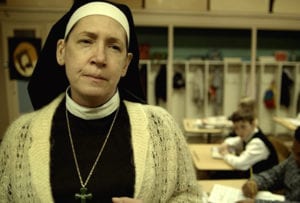
One of the novel’s three protagonists is the leader of the Aunts – Aunt Lydia. Lydia is sometimes conflated with the other Aunts in the Red Center by the readers, because she was indeed quite opaque in the original novel. But in this sequel, she is raised up from being an opaque, straw evangelist to a ruthless pragmatist, the Pilar Primo de Rivera of Gilead to Commander Judd’s José Antonio. By her second chapter, I knew that this character was going to be one of the most complex and three-dimensional villain-protagonists that I had read.
In my own present day I am a legend, alive but more than alive, dead but more than dead. I’m a framed head that hangs at the backs of classrooms, of the girls exalted enough to have classrooms: grimly smiling, silently admonishing. I’m a bugaboo used by the Marthas to frighten small children – If you don’t behave yourself, Aunt Lydia will come and get you! I’m also a model of moral perfection to be emulated – What would Aunt Lydia want you to do? – and a judge and arbiter in the misty inquisition of the imagination – What would Aunt Lydia have to say about that?
“I’ve become swollen with power, true, but also nebulous with it – formless, shape-shifting. I am everywhere and nowhere: even in the minds of Commanders, I cast an unsettling shadow. How can I regain myself? How to shrink back to my normal size, the size of an ordinary woman?
“But perhaps it is too late for that. You take the first step, and to save yourselves from the consequences, you take the next one. In times like ours, there are only two directions: up or plummet. – Margaret Atwood, The Testaments, III Hymn
It’s hard not to have some sympathy for Lydia, or at the very least, a good deal of understanding how she came to be. Lydia worked crappy jobs through college, had an abortion and a failed marriage in her youth, and was a successful judge until there was a fundamentalist coup in the United States. Hand-picked by the new theocracy for her insight into women’s lives (from working in family court, in schools, and with rape victims) she was made to instruct female sex slaves of their fate after being imprisoned, starved, and forced to kill other, older women less useful to the regime. And yet she is nothing if not ruthless, having worked her way to the top of the Founding Aunts to displace her truly religious extremist rival, Vidala. And yet, is it not better if she strives to head the women in Gilead, given her desire to remake it, her connections with the rebel group Mayday? There’s nothing but complexity to be found with her, and it’s beautifully matched with Atwood’s wonderful purple prose.
For the sake of comparison, Lydia’s backstory in Season 3 of The Handmaid’s Tale boiled down to her striking up a friendship with a struggling single mother, but then turning on her after she was rejected by her boss. Her internal struggle was disliking some of the new mutilations. It’s a far cry from Atwood’s masterful approach to the character and her compelling past.

The other two narrators of the novel are Agnes (later Aunt Victoria, and who possibly was once called Hannah), and Daisy (once called Nicole, and who later uses the pseudonym Jade). They are June’s two daughters, and live parallel lives to each other in Gilead and Canada; they are almost perfect at being foils to one another. Both see adoptive parents die. There are themes concerning their supposed fragility: Agnes was taught to be a “precious flower” in Gilead, Nicole was made into “Daisy,” and later chooses to be a harder material, “Jade” – Agnes grows out of her childhood name too, and chooses the triumphant “Victoria” as her Auntly name. Both suffer from overprotective parents and teachers; Agnes cannot enter her female study because her woman’s brain cannot process it, Daisy cannot do the same because – it would be too boring, but also because of her Nicole identity. Daisy has a brilliant storyline about being the hidden Baby Nicole, a national icon within Gilead, a patron saint of children and the possibility of betrayal – June’s “betrayal.” Atwood also brilliantly distinguishes the perspective of these two young women from that of the distinguished septuagenarian, Lydia.
It’s harder to compare the stories of these two to the show, given they are still children at the end of Season 3. But I must say that Agnes’s story, focusing on the indoctrination within Gilead, approaches the subject in far more detail than the show does. Agnes’s story – about what it is like to grow up within a dictatorship – is explored in detail, from the Biblical story of the Concubine of a Levite, to her childhood best friend Shunammite being married to Gilead’s Bluebeard, B. Frederick Judd. It’s far deeper than the show’s “the children who grow up in Gilead will have a bad time, let’s get them all out” that the show goes for – Agnes’s escape after so much trauma feels much more earned than June getting over 50 children out.

Daisy’s story (and the stories of Agnes and Lydia in the second half of the story) impressed me the most, however, because Atwood manages to completely change the narrative tone of the novel from her original book. I’ve thought that the show was falling short from trying to make The Handmaid’s Tale into an action show – well, Atwood does that here with Daisy being a teen spy in Gilead! Except for the reason she succeeds is that she is an active rebel and does not get caught, as opposed to what’s been going down with the show’s version of June, who does get caught but never suffers consequences.
In terms of worldbuilding, the international situation also feels a lot more grounded, even if Atwood does keep a few things vague, as every good author can do well to keep the audience invested and ask questions about the world. Primarily, we are introduced to the “messiness” of Canadian foreign policy, which allows some dissent but will do little to protect refugees and allows these manipulative missionaries to their country, intimidated by their neighbour. It’s a stance that seems a lot more cohesive than the show, where Canada’s stance has been “they look like they’re sucking up to Gilead, but actually they’re not, and we need that for a big plot twist where the Waterfords get arrested.”
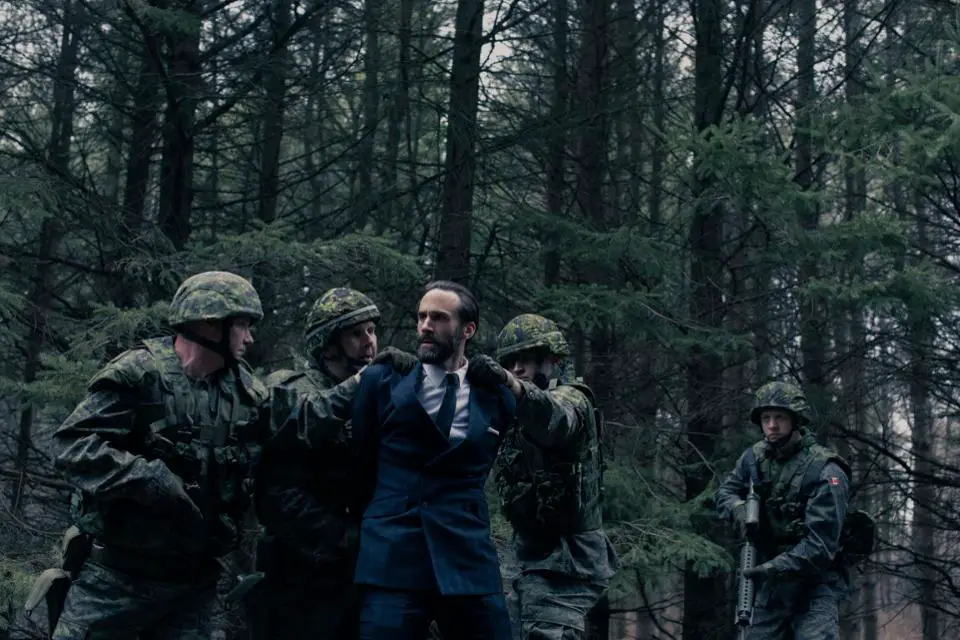
I also just want to take the time to appreciate how Atwood put a much more positive spin on things in her sequel. I wouldn’t call The Handmaid’s Tale “grimdark.” It’s a dystopia, and was intended as a cautionary tale – do not let Gilead occur. Thirty-four years later, Gilead has been going on in Atwood’s world – and some might say that the real world is as close, or closer to Gilead than it was in 1985. Instead, Atwood gives us hope that in a dark world, good can still triumph, and we get a wonderful ending of Agnes and Daisy being reunited with June, and Lydia hoping to cause the collapse of Gilead by shooting Commander Judd. It’s a far cry from the ambiguous ending June got in the original novel. I think the show is going for this angle of hope too, and I do commend them on that – as I have said, I don’t want to reduce them to the same levels of Game of Thrones. It’s just not as earned for me, and has problems that Atwood excels at in The Testaments.
The Testaments does have some flaws. Nothing’s perfect! The explanation as to why Lydia needed Daisy in Gilead to get out information is rather weak: maybe Daisy also worked as a bargaining chip against Vidala and Judd, but it is a little loosely tied together. But I truly, overwhelmingly love it, and I think I actually might not have appreciated it so much without feeling underwhelmed from the more recent seasons of the show.
A Hope for Winter and Spring
Atwood and Martin share the (as far as I am aware) rare status of publishing, or planning to publish their own sequels as other people have made sequels for them. I know it’s common for anime to overtake manga, and I’m sure that some author somewhere has made a sequel after a film adaptation was released in their lifetime. But a novelist having television series make sequels for them, and then publishing something of their own… I think that’s a little bit unique to the recent age of prestige television being produced.
At The Fandomentals, there’s a common sentiment of disregarding Game of Thrones entirely when predicting the future of A Song of Ice & Fire. While that works to a certain extent, going too far rings a little too close to the denialism levels of people on the westeros.org forums who still believe that Ashara Dayne is Jon Snow’s mother.
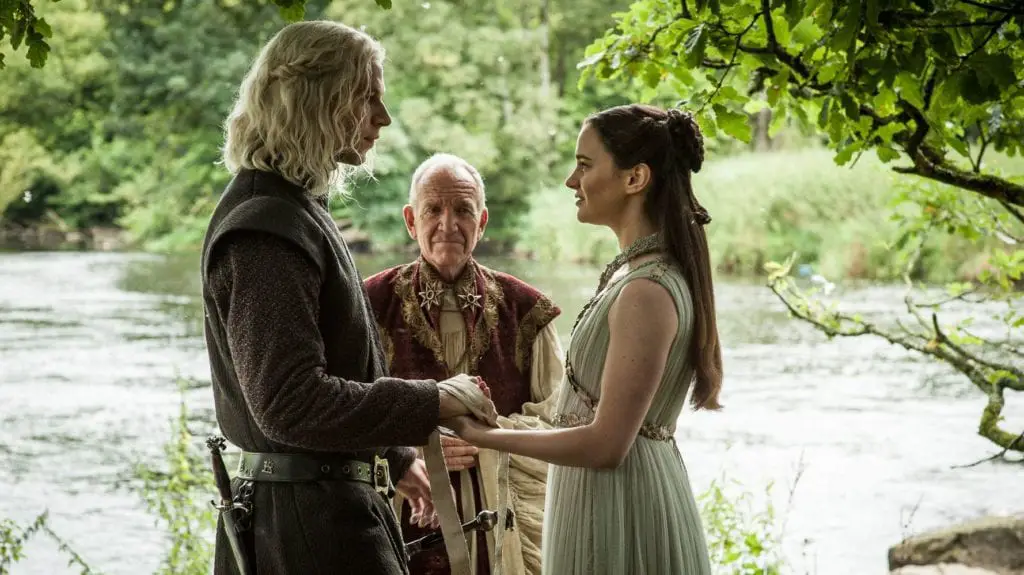
So after Season 8 ended, I felt an odd emptiness even though I never expected the ending to be satisfying. It got me thinking: “Will Daenerys really have a dark turn that unearned in the books, too?” “Will Bran really be king only to surprise the audience; only being elected king after having little narrative importance other than having ‘the best story’?” Despite reasoning with myself that, no, Martin is going to execute these things well if they happen in the course of the novels, I found myself doubting.
Margaret Atwood cured that doubt for me. If you told me after The Handmaid’s Tale Season 3 that The Testaments would feature an action story and Aunt Lydia’s past, I’d almost be hesitant about reading it given how shabbily executed the show’s transition away from purely internal storytelling has been, as well as delving into new backstories. But no, Atwood managed to bring her own ingenuity to the sequel at every turn.

And I believe that Bruce Miller is still a lot more accomplished of a screenwriter than Benioff & Weiss are, and does indeed takes some effort to corroborate with Atwood about his ideas and her own. At the very least, Hulu’s The Handmaid’s Tale has been given content to improve on by Atwood now, so I have hope that it will now be able to recover in a way that Game of Thrones could not.
Reading The Testaments felt like an emotional preview of The Winds of Winter – only a preview, because while I really enjoyed Atwood’s novel, it’s not quite the emotional investment that A Song of Ice and Fire has been to me. I can now ask myself, “If Miller can take the immensely complex mastermind that is Lydia’s character and reduce her to a woman scorned, then of course Benioff & Weiss can take the esoteric, eldritch side of Euron and make him a cheap pirate.” Or, “If Miller can introduce the new, hopeful side to the franchise so clumsily, then, of course, the bittersweet ending of A Song of Ice and Fire has been replaced by something that comes across so empty for me.”
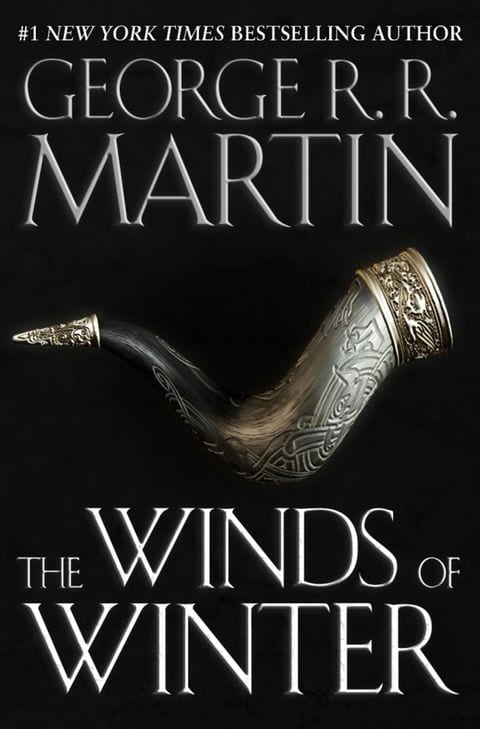
I don’t think I would have kept watching The Handmaid’s Tale if it was an original show on Hulu, with nothing by Atwood to compare it to. Neither would I have watched Game of Thrones after Season 5 if there was no A Song of Ice & Fire. But, then again, the compelling, earlier seasons The Handmaid’s Tale and Game of Thrones would not exist without the strong support of the narratives that Atwood and Martin created.
Funnily enough, it has been the flaws of both shows that have made me fall deeper in love with their respective novels. I got so much more out of rereading ASoIaF after Seasons 5 and 6, and couldn’t take my eyes off the page reading The Testaments – I was truly intrigued with the novel in its own right, but also just how it superseded the newer seasons of the show in every way.
So thank you, Margaret Atwood, for not just writing a brilliant novel that fascinates me at every turn, but also restoring my hope in the genius of an original author, that cannot be diminished or tarnished no matter what happens with an adaptation. It was these two brilliant authors that such compelling narratives originate from – I just needed this novel to experience that truth for myself.

